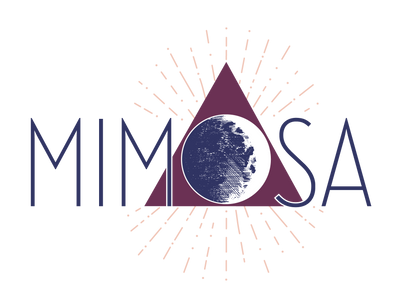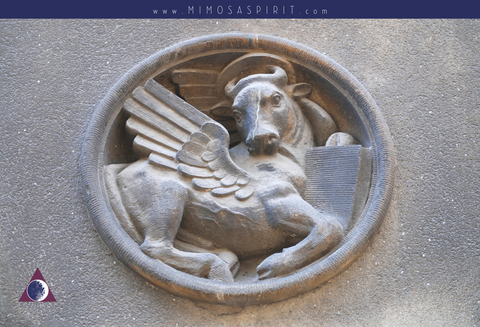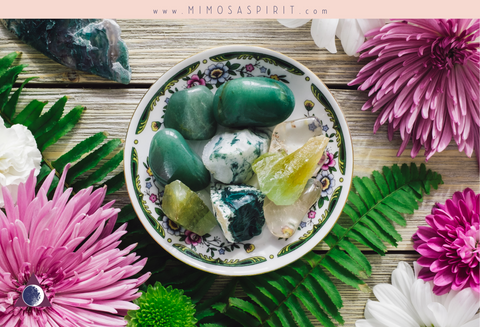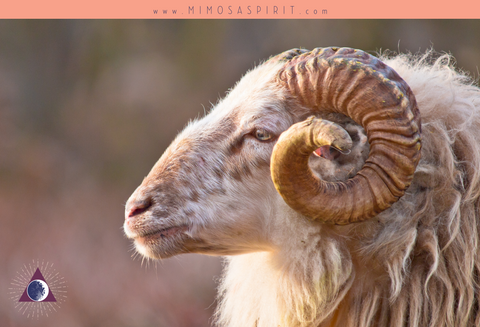
A Basic Introduction to the Chakras
Many traditions worldwide hold that vital energy flows through our bodies. Energy pathways connect one function of the body to all the others, pathways that also serve to connect the individual with Earth and Heaven. While differences obviously exist about the exact nature of these beliefs, the overall idea transcends specific religious and medical traditions. So does the idea that the energy carried by these pathways tend to focus at various points in the body, and that these points govern various aspects of our lives.
We’ve come to call these focal points of energy chakras, which comes from the Sanskrit word for wheels. Psychics and other seers visualize them as spinning wheels in a rainbow of colors, running in a line from the base of the spine to the crown of the head. Each chakra corresponds to a color, each develops at a particular stage of human development, and each governs an area of being human--the things we feel, think and do that make us who we are.
The Hindu-based spectrum of seven major chakras is only the beginning. Other chakras supplement the list, for example hand chakras, through which energy healers transmit healing energy. And this is only one system. Because the idea of the energy body is nearly universal, systems like this form a part of philosophies and medical understanding worldwide. Egyptian, Inca, Celtic, and Cherokee teachings (to name a few) show similar energy centers as part of the human body. Scientific investigations have made a start at finding a physical basis for the concept of subtle energy, as these systems are called. Medical modalities that harness subtle energy are also becoming more widely accepted.
Whole books cover this topic, and we won’t try to replicate that here. Simply knowing the system of associations based on the chakras can be helpful to anyone. For one thing, color associations underlie the magical uses of everything from candles to crystals. We can also find many ways to use the idea of chakras psychologically, especially for understanding our own strengths and weaknesses.

In practical, day-to-day reality, it’s in our best interest to keep the chakras balanced and working together smoothly. If you're somewhat acquainted with the chakra centers in the body, you've probably wondered about the different ways you can open and balance them. How do you keep your energetic wheels healthy? You can easily incorporate any or all of these simple practices into your daily routine for optimum chakra health!
- Color is perhaps the most common association with the chakras, and the great thing about it is it couldn't be easier to use. You can utilize color by wearing it (clothing and jewelry), surrounding yourself with color in your home or office decor, using colored lights and candles, eating a variety of colorful foods (I'm not talking Skittles here - more along the lines of a colorful salad!), incorporating certain colors into your creative projects or artwork, and so much more.
- Crystals are excellent helpers when it comes to opening, balancing, aligning or healing chakras. Just choose a crystal or stone of the color you would like to work with, and then put it to work by carrying it, wearing it in jewelry, placing it in your space (or in a crystal grid), making a crystal elixir or vibrational spray, or laying the crystal directly on the affected chakra.
- Essential oils can be extremely beneficial for your chakras, and they're easy to use! Diffuse oil throughout your home or office, substitute it for your favorite perfume or cologne, add it to your bath water, or simply apply a drop or two to the area surrounding the chakra you're working on. (Note: Be sure to dilute essential oils with an appropriate carrier oil when applying directly to the skin.)
Read on for our recommended crystal and oil correspondences for each chakra!

Root Chakra: Grounding
The root chakra works like an energetic center of gravity. Babies develop this chakra first, and if well cared for will develop a sense of physical security that will help them stay grounded throughout their lives. A poorly developed root chakra can lead to insecurity about basic survival, which may manifest as preoccupation with money, sex, or other vices.

Sanskrit Name: Muladhara
Color: Red
Location: Perineum
Crystals: Red Jasper, Garnet, Bloodstone, Hematite, Black Tourmaline, Smoky Quartz
Oils: Frankincense, Myrrh, Sandalwood
Element: Earth
Sacral Chakra: Creativity, Sexuality, & Personality
This is the chakra of play, developed when we are young children. Unfortunately, our society doesn’t always encourage play, sometimes, these days, even for little kids. So many of us lose or never develop a capacity for creative work, sexual enjoyment, and spontaneity. When this chakra isn’t well developed, the individual may seem repressed, sometimes to the extent of having no personality. An imbalance in the other direction can lead to a wild personality.

Sanskrit Name: Svadisthana
Color: Orange
Location: Abdomen
Crystals: Carnelian, Orange Calcite, Fire Agate, Brown Aragonite, Copper, Crazy Lace Agate
Oils: Orange, Jasmine, Sandalwood, Ylang Ylang
Element: Water
Solar Plexus Chakra: Vital Energy & Power
This is where our emotions and thoughts meet bodily functions. Most of us naturally feel this, when everything from fear to love hits us in the stomach! Instinctive drives originate here, some of which we may struggle to recognize: will, motivation, life direction. When well developed in later childhood this chakra helps the individual find direction in life. Failing this, a person may be passive, with a deep-seated sense of inferiority.

Sanskrit Name: Manipura
Color: Yellow
Location: Navel
Crystals: Citrine, Golden Tiger's Eye, Yellow Jasper, Golden Calcite, Imperial Topaz, Pyrite
Oils: Bergamot, Lemon
Element: Fire
Heart Chakra: Emotions & Love
More than just romantic love, the heart chakra helps us focus on the things we care about. Obviously this encompasses the people in our lives, but it can also include animals, nature, learning, activities, causes, and much more. Every one of us has a different emotional make-up, which manifests itself in the different things we care about. The heart chakra develops just after puberty. Poor development might show up as apathy. But overdevelopment is common as well; women, especially, may become so focused on loving and caring for others that they lose their sense of self.

Sanskrit Name: Anahata
Color: Green or Pink
Location: Center of Chest
Crystals: Emerald, Jade, Malachite, Moss Agate, Unakite, Watermelon Tourmaline, Green Aventurine, Rose Quartz
Oils: Rose, Melissa, Neroli
Element: Air
Throat Chakra: Communication
The ability to express ourselves matures in the teen years, along with a mature understanding of the words and thoughts of others. While creativity originates in the sacral chakra, it finds expression through the throat chakra. As you might guess, this is another area where the rules of our society don’t always mesh with what we need as individuals. Poor development of this chakra can make a person feel that anything they say is bound to be wrong, while imbalance the other way can produce a gossip or chatterbox.

Sanskrit Name: Visuddha
Color: Light Blue
Location: Throat
Crystals: Amazonite, Angelite, Aquamarine, Blue Lace Agate, Blue Chalcedony, Blue Quartz, Blue Calcite
Oils: Geranium, Lavender
Element: Spirit
Third Eye Chakra: Insight & Intuition
The brow chakra acts as the Grand Central Station for processing the senses, but goes beyond to the senses that originate in the mind. If you’ve ever tried to imagine something, closed your eyes, and felt you could see just as clearly without physical sight, you have a real idea of what this means – whether or not you believe in psychics or ESP. Blockage in this chakra may show up as disinterest in anything unseen, including imaginative or abstract ideas, and of course anything associated with the supernatural. Overdeveloped, we might see a person with their head so far in the clouds that they can’t remember where they parked!

Sanskrit Name: Ajna
Color: Indigo
Location: Brow
Crystals: Lapis Lazuli, Labradorite, Dumortierite, Blue Kyanite, Azurite, Sodalite
Oils: Clary Sage, Jasmine
Element: All
Crown Chakra: Spirituality
This is the slowest of the major chakras to develop, starting perhaps around the age of 25, but often later, and continuing for some time afterwards. If you know an older person who overflows with wisdom and understanding, and has little fear of death, you know someone who has developed well in this area. The person’s specific belief system is less important than their growing capacity to learn and grow within that system. Poor development can show up in mental health issues of all kinds, whereas overdependence on “the higher things” make turn the person into a know-it-all who feels superior to others.

Sanskrit Name: Sahasrara
Color: Violet
Location: Top of Head
Crystals: Amethyst, Ametrine, Charoite, Lepidolite, Sugilite, Apophyllite, Clear Quartz
Oils: Helichrysum, Frankincense, Rose
Element: All





0 comments